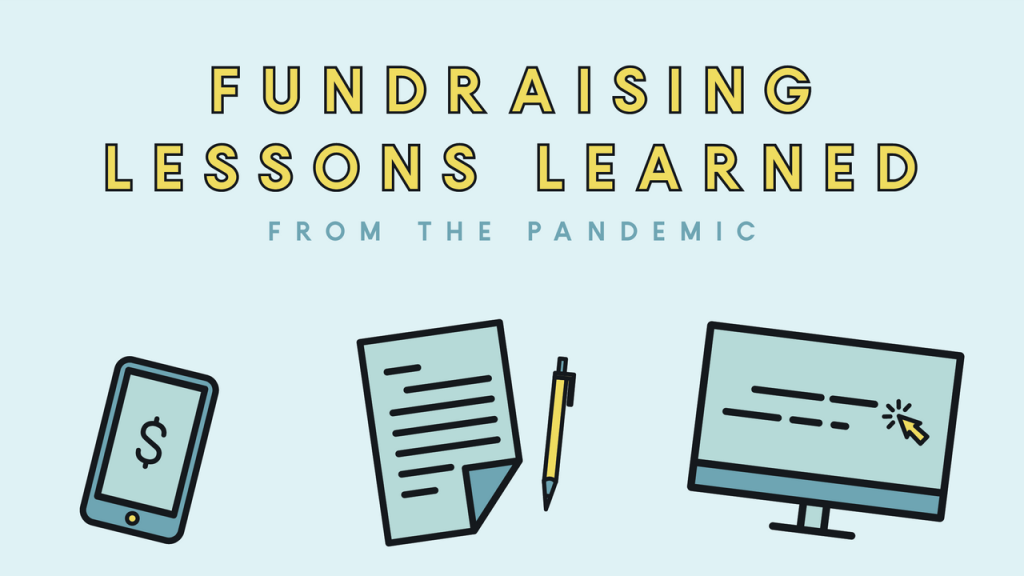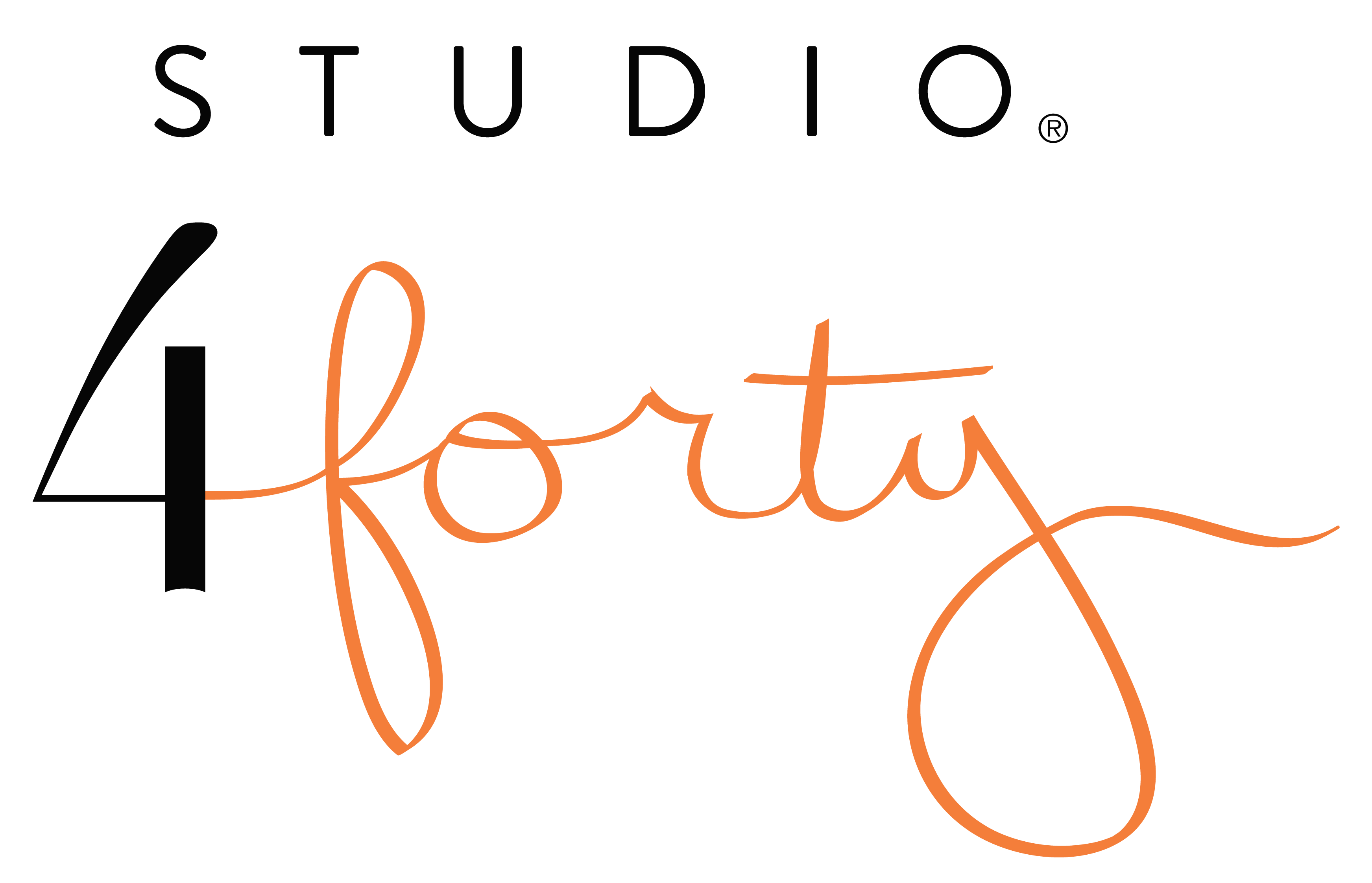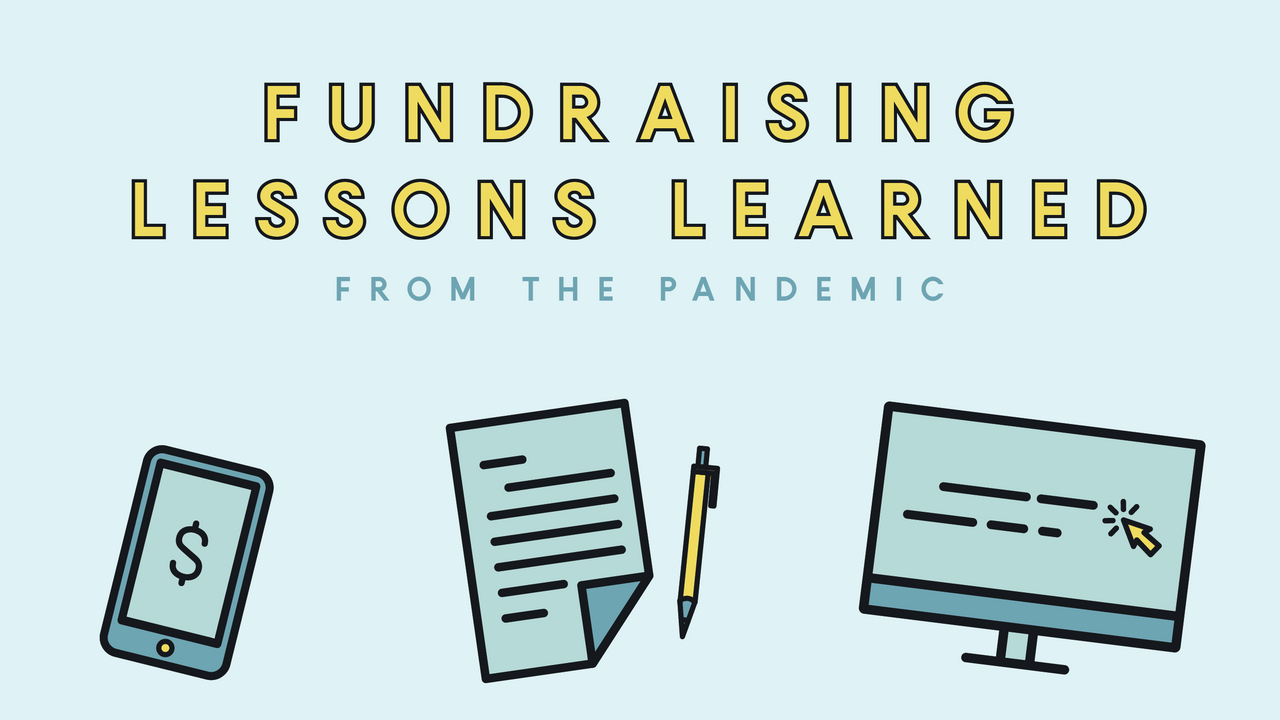
Blog Post by: Krista Elmore, CFRE
As fundraisers, we are trained to look for the opportunity in every situation. No challenge is too great for us, as it seems we (must) thrive in chaos. In some ways, chaos of the world as we know it came to a screeching halt when the pandemic was announced, and our usually busy days of setting up events and meeting donors for coffee abruptly ended. A new brand of quiet chaos set in, the kind that had everyone scrambling to adapt to our new (hopefully) temporary normal and embrace technology in a way that would allow us to continue to fundraise and support the nonprofit organizations who were counting on us. Now that the covid chaos is winding down a bit and life is returning to its more familiar pace and rhythm, there are some positive enhancements, silver linings if you will, the pandemic taught us that we, as fundraisers, need to take into the future.
1. Mobile Bidding – Pre-pandemic, we were seeing the traditional silent auction phase out. Nonprofits and donors alike were tired of the same old auction baskets year after year, and the revenue made from this activation at in-person events was becoming less and less balanced with the effort required. Enter the pandemic and suddenly the necessity of a silent auction in a virtual event could not be overstated. With the forced introduction of mobile bidding to larger audiences, suddenly an auction not only became a way for donors to bid and buy items in support of their favorite nonprofits, it was also a warm up to a virtual event, a tie that would engage that donor in the days leading up to a broadcast and keep them connected to the mission and purpose of the event.
While mobile bidding was starting to become more and more popular pre-pandemic, once the world was shut down, online auctions skyrocketed and nonprofits (and supporters) all over the world had to embrace this technology in order to be involved with socially distanced support. The convenience of mobile bidding, as well as the expanded time frame it allows for bidding, has positively impacted the revenue of silent auctions. Instead of a one day (really, hours) auction at an in-person event, online auctions were opening anywhere from 3 days to 2 weeks prior to an online event broadcast. This extra time allowed supporters to hop into an event, begin bidding on their favorite items, donate to the charity, and would get pulled back in with an alert if they were outbid.
This technology, mobile bidding, should certainly continue as we move back into in-person events. Consider, as you do, opening up the silent auction a few days prior to your in-person event and closing a few minutes after the program has started, prior to the Live Auction. Many of our STUDIO 4Forty clients have hit their silent auction revenue goals even before the doors open by utilizing this technology.
2. Online Campaigns – While a call for donations through snail mail and in a plea online isn’t new because of the pandemic, the shutdown of 2020 forced many nonprofits to embrace this form of outreach. An online campaign, while similar in many of its basic set-ups and structures to a physical mailer, has the opportunity to reach outside of an organization’s set of contacts and potentially open the digital door to new donors, followers, and volunteers. Thankfully, we live in an age of social media and websites, so for many, this online shift was a natural progression, but for the smaller nonprofits that hadn’t yet embraced social media or strategically created an online presence, this change forced many to adapt and create content in a new way. Our favorite online campaigns used a combination of social media posts and live videos, e-blasts, and snail mail to make sure that anyone in their sphere of giving would have the opportunity to support in the most convenient way for them. Online giving platforms like BetterUnite and GoFundMe Charity allowed any nonprofit to input their information, link their bank accounts, and accept donations instantly from donors anywhere in the world. Now that the institutional knowledge is there, we hope to see all nonprofits continue to embrace online campaigns and build their network of supporters through this platform.
3. Online Courses – As a company, one of the ways STUDIO 4Forty adapted to the pandemic was to embrace how we can better support nonprofits all over the world, not just those that we work with in either our consulting or event services. We felt like it was our responsibility to share our knowledge and offer a guiding hand to anyone willing to learn, so we began to offer online courses designed specifically for nonprofits looking to enhance their fundraising. Our first course was in February 2021 entitled, “The New Donor of 2021,” with brilliant insights and research on donor trends before, during, and after the pandemic from the President of STUDIO 4Forty, Heather Frank. Our second course, the first of a series from our Director of Project Management, Ashlee Meier, entitled, “The Art of the Ask,” launched in May 2021 and focused on the ways in which the written word can propel your followers to become donors through clear and engaging messaging. Our next course, “Forming Your Perfect Committee,” will launch on September 2nd with myself and fellow Project Manager, Jennifer Downes, and will provide best practices, deliverables, and new insights to approaching the right people for the right volunteer positions to make sure your fundraiser is a success.
While not every nonprofit may be in the position to create online courses of their own, the opportunity to either attend or teach a course has lasting benefits that extend beyond the hour or two you’re engaged with the class. The knowledge gained from a topic that perhaps you as a fundraiser are struggling with will not only enhance your confidence, it may spark an interest or idea in a fundraising field that you had previously been ignoring. Teaching a course, especially, will force you as the instructor to dive deeper into the topic and really challenge your own set of beliefs and skills in order to most effectively encourage, educate, and enhance the understanding of those learning from you.
While we are all a bit fatigued from learning how to embrace flexibility, it is a true necessity when it comes to fundraising. The challenges of the pandemic will last well beyond the timeframe of the illness, but I hope that the adaptations, skills, and new perspectives will, too. We have all grown so much in this past year, so my hope for you is that you’ll take those lessons and make the most out of them!

